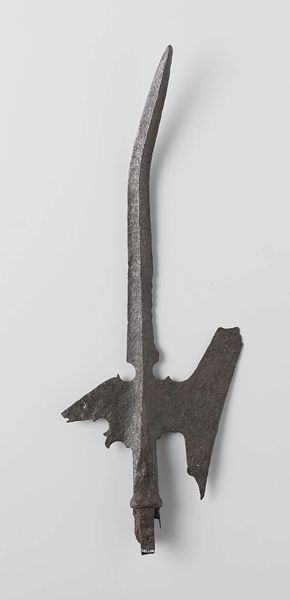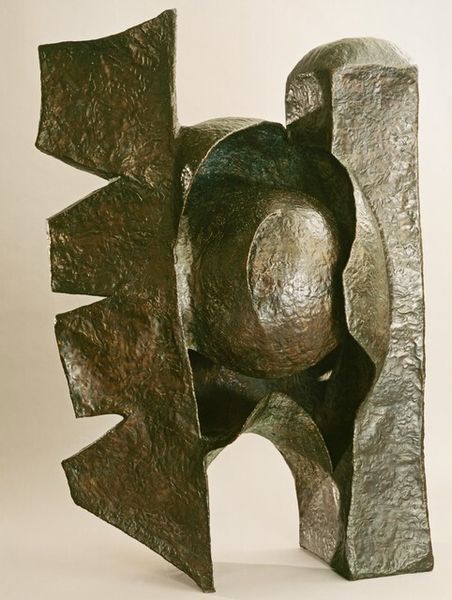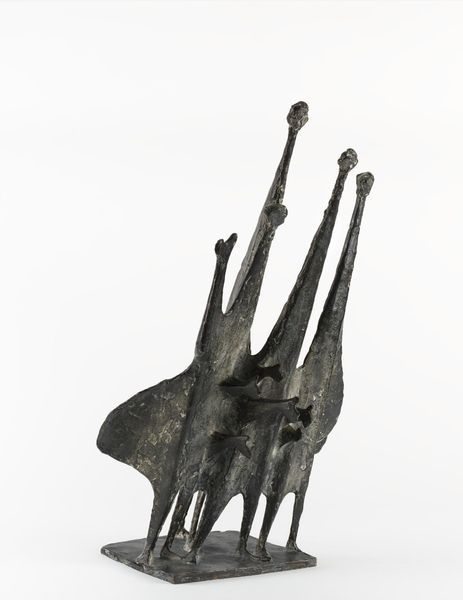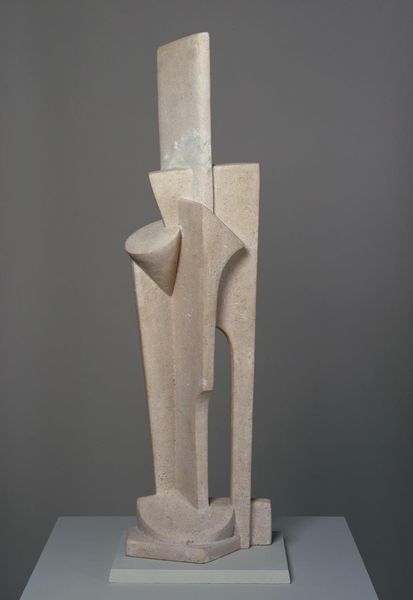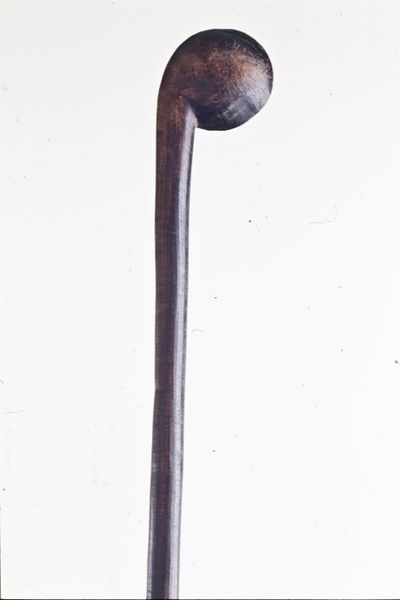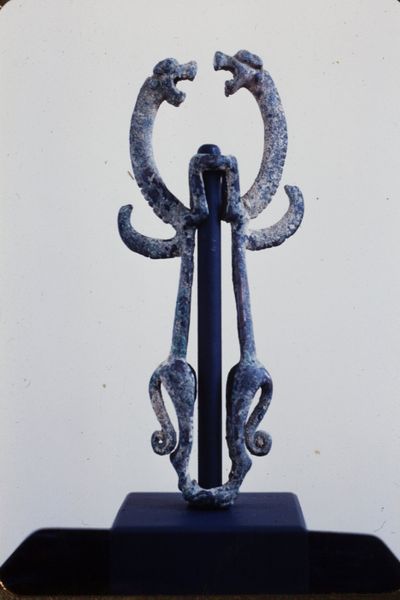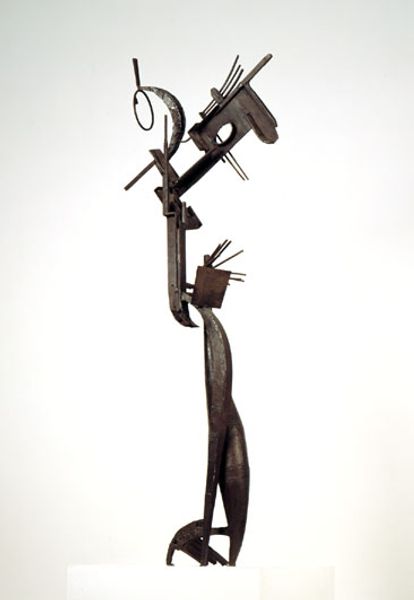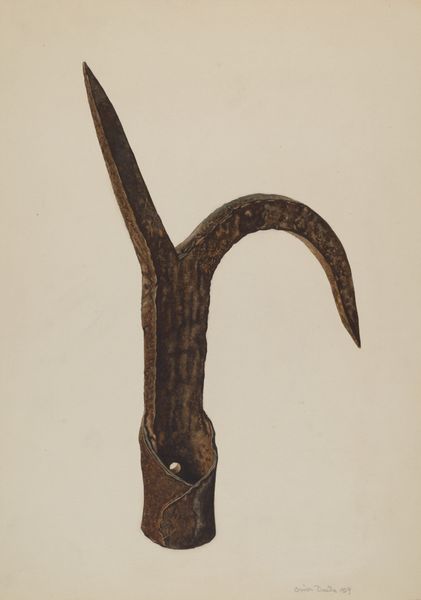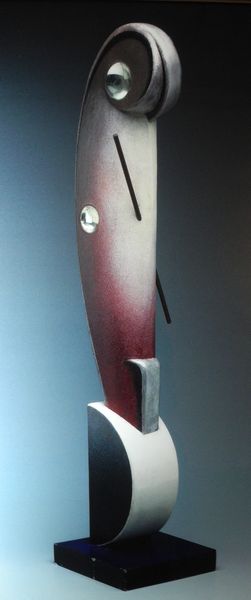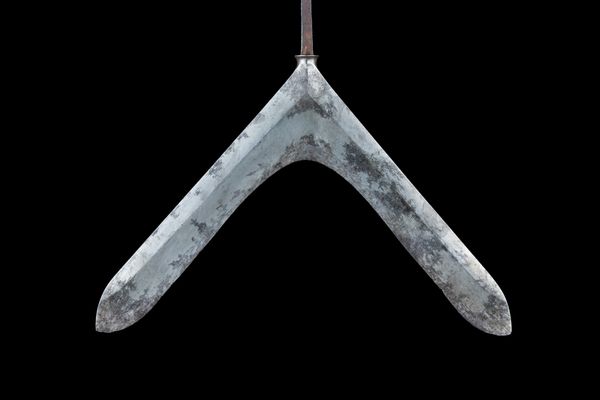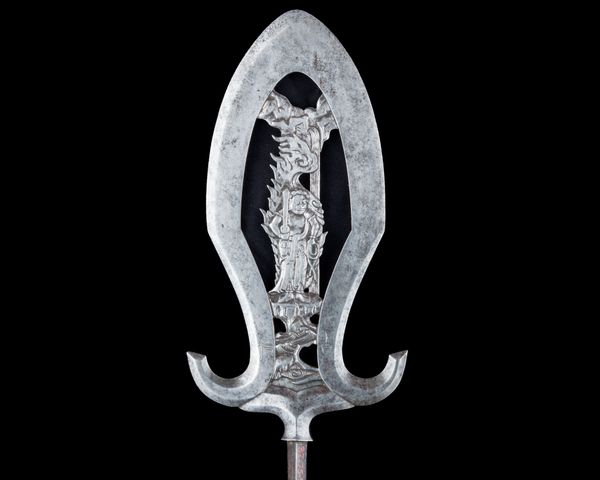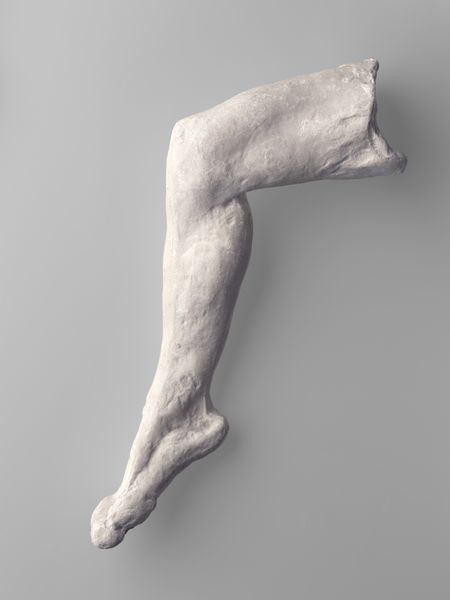
metal, sculpture, engraving
#
metal
#
sculpture
#
geometric
#
sculpture
#
islamic-art
#
engraving
Dimensions: 12 5/16 × 9 5/16 × 5/16 in. (31.27 × 23.65 × 0.79 cm)
Copyright: Public Domain
Curator: Let’s dive right into the mystique of this “Status blade” from around the 19th century, currently residing at the Minneapolis Institute of Art. Doesn't it just *thrum* with untold stories? Editor: It really does! Made of metal, with the most incredible engravings all over it. At first glance, it feels almost like a brutal flower – a weapon rendered strangely beautiful. What strikes you most about this piece? Curator: Ah, brutal flower, I love that! For me, it’s the calligraphy etched onto the metal. It whispers of a world where power and artistry danced intimately together. Each curve of those letters probably held profound meaning. Editor: Do you recognize the script, is there anything we know about who would have used something like this? Curator: I believe the script is Arabic, hinting at a rich Islamic artistic heritage. Status blades like these were often used more for ceremonial purposes or as symbols of rank. Think of them as elaborate business cards… very sharp, very elegant business cards! I'm curious – does that knowledge shift how you view the "flower"? Editor: Definitely, it adds layers! It’s less about brute force now and more about cultivated prestige. Were they functional weapons at all, or purely symbolic? Curator: Some might have seen battle, but I think their primary power lay in visual communication. They projected authority, lineage, and probably frightened the daylights out of anyone who *wasn't* on the guest list! Does that change how you imagine holding it? Editor: It does, it feels almost like wearing art, a very intimidating fashion statement! Thanks for sharing, this piece has grown for me! Curator: The pleasure was all mine. Remember art asks questions not just of the artist, but of us too.
Comments
minneapolisinstituteofart almost 2 years ago
⋮
These prestige blades belonged to soldiers of the 19th-century Sudanese Mahdist army, at a time when Sudan was under Turkish-Egyptian colonial rule. In 1881, Muhammad Ahmad (1844-1885), a Sudanese religious leader, was heralded as Mahdi (lit. “Guided One” in Arabic) or messianic redeemer of the Islamic faith. He and his successor led successful military campaigns against Ottoman Turkish occupying forces. Members of the Mahdi military carried forked and branched blades inspired by the shape of Central African throwing knives. Unlike their Central African counterparts, these blades were not meant as weapons but as emblems of rank. Most of the engravings on these blades are not in Arabic and are illegible to humans. They may, like the wavy inscriptions on the tunic nearby, be addressing the supernatural jinn, or spirits, imploring them for assistance in the anticolonial battle. The shorter blade has Arabic calligraphy etched within medallions. One of these contains a verse from chapter 61 of the Qur’an, called Ranks or al-Safs: “Victory from God and an imminent conquest,” an exhortation to the fighter. Interpretation of text:Whatever God wants, happens.Victory from God and an imminent conquest.
Join the conversation
Join millions of artists and users on Artera today and experience the ultimate creative platform.
